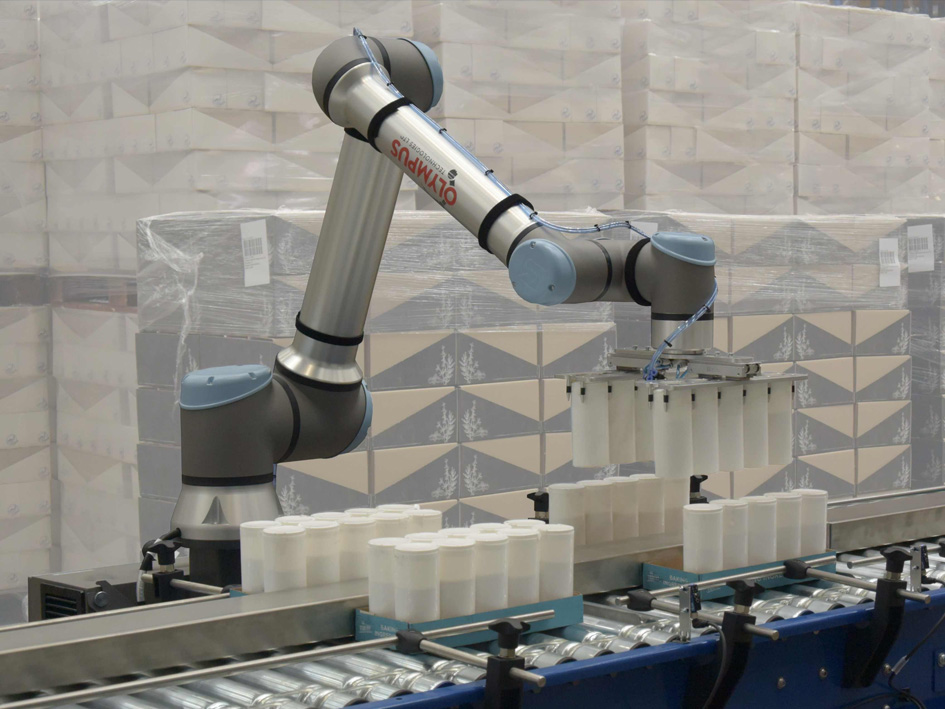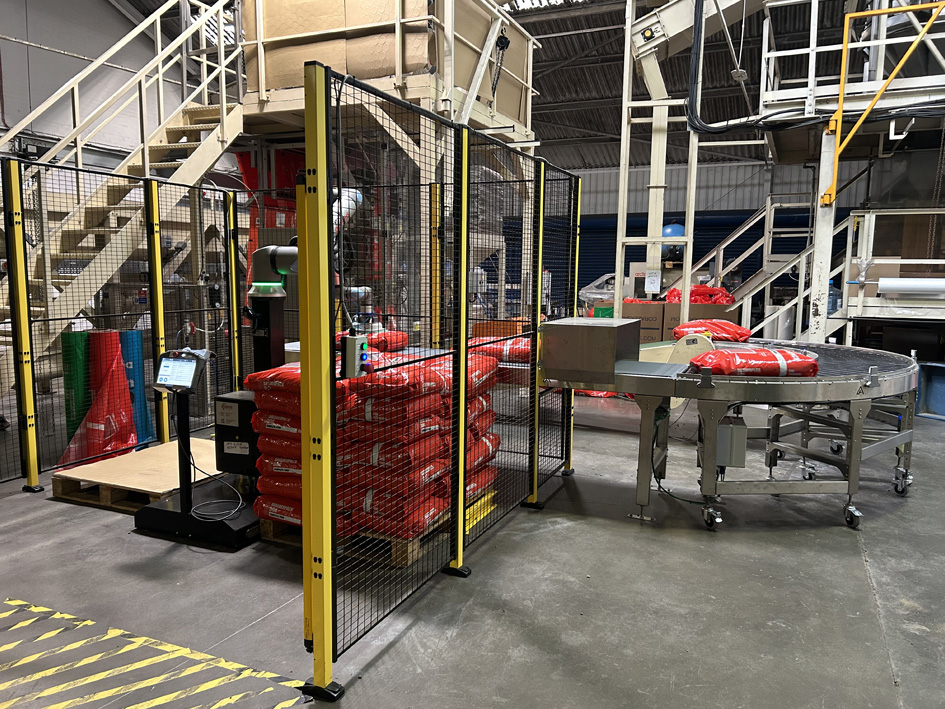Robotic welding systems have become indispensable to modern manufacturing, offering unmatched precision, speed, and repeatability.
Yet alongside these benefits comes the critical responsibility of designing welding cells that prioritise safety at every level.
This guide walks through the essential considerations for developing a robotic laser welding cell that not only delivers increased productivity but also ensures a safe working environment for both human workers and machine operators.
What Is Robotic Welding?
Robotic welding refers to the use of automated robot systems to perform welding operations with minimal human intervention.
These systems are designed to improve consistency and reduce human error by automating the welding process. Unlike manual welding, where a welder controls the torch by hand, robotic systems rely on pre-programmed welding parameters and automated positioning to execute precise welds.
Welding robots are often paired with sophisticated equipment such as robotic welding torches, wire feeders, and programmable controllers to support a wide variety of welding applications, from automotive panels to structural components.
Safety Risks in Robotic Welding
While robotic welding significantly reduces some risks associated with manual welding, it introduces new ones that must be accounted for in system design. Key safety risks include:
- UV radiation and arc flash, which can lead to serious eye injuries like arc eye.
- Welding fumes and gases that may affect air quality and respiratory health.
- Mechanical hazards from moving parts, such as the robot arm or automated welding torch.
- Electrical hazards from welding equipment or exposed wiring.
- Unexpected robot motion, particularly during maintenance or teaching procedures.
Each of these hazards highlights the importance of a thorough risk assessment during planning and implementation.
Essential Safety Features for Welding Cells
A well-designed robotic welding cell integrates both engineering controls and administrative safeguards. These include:
- Physical barriers such as interlocked doors or guarding to prevent unauthorised access.
- Light curtains and area scanners to detect worker presence and halt operation if someone enters the hazard zone.
- Clearly marked safe distance zones and warning signals to improve awareness.
- Emergency stop buttons and fail-safe systems that immediately shut down the robot if a fault or breach occurs.
Equally important is ensuring access to the correct personal protective equipment (PPE). Workers should always wear:
- Safety glasses or full-face shields to guard against UV radiation and flying debris.
- Flame-resistant gloves and clothing to prevent burns.
- Respirators or fume extraction systems when working near areas with poor air quality.
The use of appropriate personal protective equipment is essential not only for worker safety but also for meeting national and international safety standards.
Collaborative Robots vs Industrial Robots
When it comes to robotic welding, both collaborative robots (cobots) and industrial robots play crucial roles, but they differ in how they manage safety considerations.
Cobots are designed to operate alongside human workers with minimal guarding. Their built-in sensors and force limits allow them to stop if they encounter an obstacle - making them ideal for low-volume or varied welding tasks where flexibility is key.
Industrial robots, by contrast, are suited for high-speed, high-volume production on the factory floor. They require more stringent safety systems - including enclosures and restricted zones - but offer faster cycle times and greater payload capacities.
Designing the Robotic Laser Welding Cell Layout
An efficient welding cell must strike the right balance between productivity and workplace safety. Key considerations when designing your layout include:
- Spatial planning to ensure smooth material flow and operator access.
- Clear safety zones marked by floor tape, visual signals, or access-controlled gates.
- Installation of ventilation systems and fume extraction to manage emissions during the welding process.
- Strategic placement of the welding torch and wire feeders to reduce unnecessary robot movement.
Olympus Technologies works closely with clients to design bespoke robotic welding cells that account for both workflow efficiency and rigorous safety controls.
Programming and Operating Safely
Safe programming is just as vital as physical safety features. Robots must be programmed to avoid collisions, stay within defined boundaries, and maintain safe distances from humans during operation. User-friendly interfaces can aid operator control and reduce the chance of programming errors.
Operators should be trained not just in starting and stopping procedures, but also in monitoring welding parameters, identifying system faults, and responding to emergency alerts.
Training and Maintenance for Safety and Performance
No welding automation system is complete without a proper training programme. Workers must understand the entire robotic system, including its safety features, programming logic, and hazard zones.
Routine maintenance is equally critical and should include:
- Inspection of all safety equipment such as interlocks and sensors.
- Checking the robot arm and torch for wear and alignment.
- Verifying the condition of consumables, such as welding wire.
- Testing emergency stops and fail-safes.
Scheduled maintenance minimises downtime and helps prevent welding accidents caused by faulty components.
Benefits of Robotic Welding Automation
The benefits of robotic welding systems go beyond faster output:
- Improved consistency: Automated processes ensure each weld meets quality standards.
- Reduced risk: Workers are removed from direct exposure to arc flash, fumes, and physical strain.
- Enhanced efficiency: Robotics reduce rework and improve throughput.
- Return on investment: Lower labour costs, fewer errors, and quicker project delivery lead to long-term savings.
Olympus Technologies supports manufacturers across the UK with tailored robotic automation solutions, helping them scale operations while maintaining exacting quality and safety standards.
Building a Safety-First Workplace Culture
True safety doesn’t end with equipment - it starts with culture. Businesses should:
- Empower workers to report hazards or unsafe conditions.
- Encourage regular safety reviews and team feedback.
- Recognise and reward adherence to safety protocols.
- Reinforce the importance of following procedures for every welding operation.
Navigating and Operating the Welding Cell
Operators must follow strict protocols when entering or interacting with a live welding cell:
- Always check that the robot has come to a full stop before entry.
- Wear all required PPE and verify that eye protection is clean and properly rated.
- Use lockout/tagout procedures during maintenance or troubleshooting.
Regular drills and clear signage help reinforce safe habits across teams.
Accident Prevention and Response
Even with safeguards in place, it’s vital to prepare for the unexpected. After an incident:
- Stop all operations and secure the area.
- Administer first aid or emergency medical care as needed.
- Document what happened, gather witness statements, and review CCTV if available.
- Update safety protocols to prevent repeat occurrences.
Case studies from Olympus Technologies demonstrate how early planning and robust procedures can prevent incidents and maintain uptime - even in high-risk environments.
Final Thoughts
Designing a robotic laser welding cell is as much about protecting people as it is about boosting productivity. By addressing every element - from system layout and programming to training and culture - manufacturers can ensure their investment in automation pays off both operationally and ethically.
Olympus Technologies combines decades of expertise in robotics integration with a deep understanding of workplace safety, offering turnkey welding automation solutions tailored to your facility. Get in touch to learn how we can help you build a safer, smarter welding operation.














